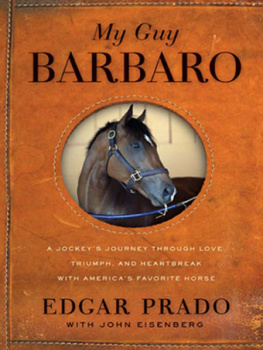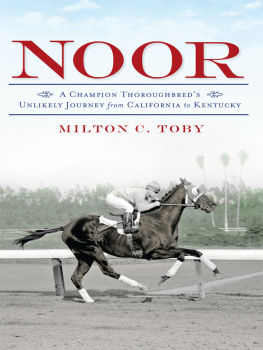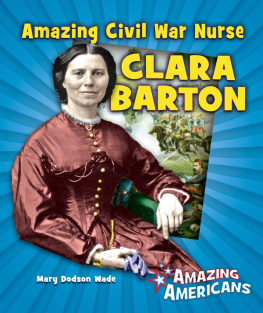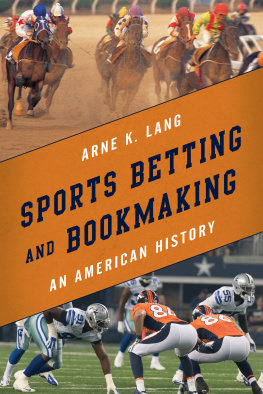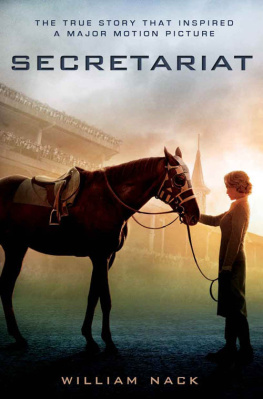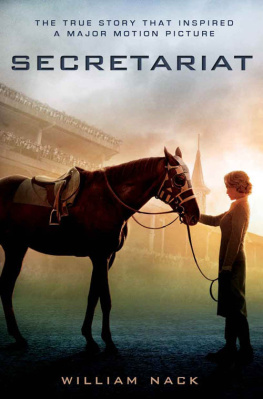
Sir Barton
and the Making of
the Triple Crown
SIR BARTON
AND THE MAKING OF THE
TRIPLE CROWN
JENNIFER S. KELLY
FOREWORD BY STEVE HASKIN
Due to variations in the technical specifications of different electronic reading devices, some elements of this ebook may not appear as they do in the print edition. Readers are encouraged to experiment with user settings for optimum results.
Copyright 2019 by The University Press of Kentucky
Scholarly publisher for the Commonwealth,
serving Bellarmine University, Berea College, Centre
College of Kentucky, Eastern Kentucky University,
The Filson Historical Society, Georgetown College,
Kentucky Historical Society, Kentucky State University,
Morehead State University, Murray State University,
Northern Kentucky University, Transylvania University,
University of Kentucky, University of Louisville,
and Western Kentucky University.
All rights reserved.
Unless otherwise noted, photographs are from the Keeneland Library Cook Collection.
Editorial and Sales Offices: The University Press of Kentucky
663 South Limestone Street, Lexington, Kentucky 40508-4008
www.kentuckypress.com
Library of Congress Cataloging-in-Publication Data
Names: Kelly, Jennifer S., 1977 author.
Title: Sir Barton and the making of the Triple Crown / Jennifer S. Kelly ; foreword by Steve Haskin.
Description: Lexington, Kentucky : The University Press of Kentucky, [2019] | Series: Horses in history | Includes bibliographical references and index.
Identifiers: LCCN 2018056722| ISBN 9780813177168 (hardcover : alk. paper) | ISBN 9780813177175 (pdf) | ISBN 9780813177182 (epub)
Subjects: LCSH: Sir Barton, 19161937. | Triple Crown (U.S. horse racing) | Race horsesUnited StatesBiography. | Horse racingUnited States.
Classification: LCC SF355.S57 K45 2019 | DDC 798.4/50929 [B] dc23
This book is printed on acid-free paper meeting the requirements of the American National Standard for Permanence in Paper for Printed Library Materials.
Manufactured in the United States of America.
| Member of the Association
of University Presses |
For Jamie, my love, with whom all things are possible.
For Sammy, who finally has his story told.
But, you know, opinions die; it is only the records that stand.
John E. Madden, in Kent Hollingsworth,
The Wizard of the Turf: John E. Madden of Hamburg Place
Contents
Foreword
Right from the start of Jennifer Kellys riveting jaunt through history and the birth of the American Triple Crown, the reader is thrust back in time and is right there at Kenilworth Park in Canada for the great match race between the legendary Man o War and Americas first Triple Crown winner, Sir Barton. Every scintillating moment of the events that led up to the race that captivated two countries is brought to life.
We are introduced one by one to some of the great iconic figures who helped shape Thoroughbred racing in America: John E. Madden, H. G. Hard Guy Bedwell, August Belmont Jr., Samuel Riddle, and J. K. L. Ross and his father, James Ross, who constructed the Canadian Pacific Railway, which would stretch across Canada from the Atlantic to the Pacific.
The younger Ross, one of the great yachtsmen of his time, would go on to command a naval vessel during World War I and eventually build up a prominent stable of racehorses, including future Hall of Famer Billy Kelly and his crowning achievement, Sir Barton, whom he purchased from John E. Madden for $10,000.
We relive the adventures of these great menincluding Hard Guy Bedwells journey from a cowpuncher in Oregon to the leading owner and trainer in America by age forty and John E. Maddens emergence from the coal mines of Bethlehem, Pennsylvania, to a larger-than-life figure and astute entrepreneur who founded historic Hamburg Place in Kentucky.
But these men are supporting players to the equine heroes of the era, as Kelly does a masterful job paralleling the careers of Sir Barton and Man o War from their sale to their epic showdown at Kenilworth Park in 1920. While Sir Barton was being sold as a two-year-old to Ross at a paddock sale in Saratoga, twenty-one yearlings were being sold by August Belmont Jr., one of whom was Man o War, named by Belmonts wife, Eleanor, and purchased by Samuel Riddle for $5,000, half the price of Sir Barton, who had finished far up the track in his four starts prior to the sale and then finished a dismal sixteenth in the Hopeful Stakes in his first start for Ross. After that, though, he suddenly turned into a champion racehorse, becoming the first horse to win the Kentucky Derby, the Preakness Stakes, and the Belmont Stakes in succession, which didnt become known as the Triple Crown until 1930.
But eventually it became obvious that Sir Barton was on a collision course with a horse who would become a legend, the idol of millions, a horse who on an October afternoon in 1920 turned Sir Barton into an afterthought, forgotten by racing fans until he was resurrected a decade later when he officially became racings first Triple Crown winner. Not even Man o War could take that title away from him.
What many dont realize is that Sir Bartons owner was reluctant to run against Man o War, who had won nineteen of his twenty career starts and had broken a number of track records while carrying weights up to 138 pounds. Along the way, he had broken the hearts of many a racehorse. Sir Barton did not appear to be a match for the younger colt known as Big Red but had built up an impressive record of his own, going twenty-two consecutive races without finishing worse than fourth, racking up twelve wins, most of them in Maryland. But Ross was, as Kelly writes, a true sportsman, and he knew what the publicity could do for his native Canada.
Following the match race, Man o War, now being called the Horse of the Century, went on a victory tour before being retired to stud. Through his travels, every move was recorded by turf writers. But, as Kelly writes, no such accolades were accorded his competitor. Sir Barton departed Kenilworth and returned to Maryland without a word in the newspapers. The great champion of 1919 and 1920 was relegated to second-place status. With fourteen cameras positioned around Kenilworth, Man o Wars seven-length victory was recorded for posterity. That was all America would ever see of Sir Barton as he faded in the distance.
Following two third-place finishes and a second after this epic match race, Sir Barton was retired. Kelly describes the remainder of his life from Audley Farm near the MarylandVirginia state line to his final years living the easy life on a ranch in Wyoming.
Kelly has taken a racehorse known only as racings first Triple Crown winner who was crushed by the great Man o War in a match race and given him lifea life that deserves to be chronicled with the great stories of the American turf.
Next page



